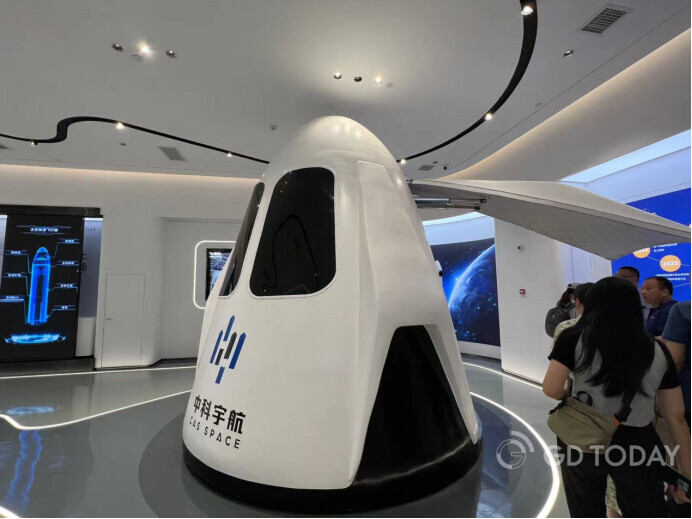Taking a rocket, experiencing 3-5 minutes of weightlessness at an altitude of over 100 kilometers, and seeing the beautiful blue planet Earth will be realized soon in 2027, according to the research activity by a high-quality development-themed media tour in Guangdong on May 15.
The media delegation visited the Guangzhou office of CAS Space, a rocket company owned by the Chinese Academy of Sciences.
"We are developing suborbital tourism services, with the debut flight scheduled for 2027," said Xiang Zebin, Deputy Chief Engineer of Kinetica 1 Carrier Rocket of CAS Space.

Model of tourist cabin on the carrier rocket
Currently, Guangdong is accelerating the development of the commercial aerospace industry chain.
China's first commercial aerospace industrial base owned by CAS Space opened in the Nansha District of Guangzhou in 2023, covering a planned area of 400 thousand square meters.
Li Qinfeng, Deputy General Manager of CAS Space, introduced that the CAS Space industrial base serves as a hub for the production, testing, and assembly of a series of solid-fuel and liquid-fuel carrier rockets.
Xiang Zebin said that through mass production and lean management, CAS Space has greatly improved assembly efficiency and shortened the launch cycle. The company is committed in developing low-cost flights and promoting commercial carrier rockets. At present, CAS Space has the capability of assembling and testing 30 carrier rockets annually.
In terms of suborbital tourism, Xiang indicated that after CAS Space announces the launch date, satellite companies can buy a "seat" on the carrier rocket like a "passenger" and launch the satellites into space. "A total of six carrier rockets are planned to be launched this year, and the 'seats' of each rocket are being sold," he added.
According to the Nansha government, CAS Space has also stimulated the development of upstream and downstream industrial chains in the district with an output value of 100 billion yuan. This includes aerospace power research and development, satellite research and development, rocket and satellite measurement, and control.
Speaking of the reasons for settling in the Nansha District of Guangzhou, Li Qinfeng said that Nansha is located in the geometric center of the Guangdong-Hong Kong-Macao Greater Bay Area. The district offers convenient transportation, convenient access to the sea, and abundant industrial land, which provides vast space for future enterprise development.
Reporter: Nina
Video: Wingheng, Zhong Zhihui, He Zhihao
Editor: Nan, James
















